#Martin Sisters Publishing
Explore tagged Tumblr posts
Text
When is your novel really done?
I already know there are areas of the manuscript that need to be tightened and shined. That being said, editing and revising can still be quite overwhelming. So where does one begin?

View On WordPress
#Author#Blogger#Chuck Palahniuk#Creative Writer#Creative Writing#Editing#Gen Z Publishing#Her Beautiful Monster#Kris Spisak#Mandi Bean#Manuscript#Martin Sisters Publishing#Moody Blue#Self-editing#Writer#Writer&039;s Digest#Writing#Writing Life#Writing Tips
2 notes
·
View notes
Note
You said that Martin would be mentioned in some statements between like 1997 and 2003 (❓)
So hypothetically how would Jon react❓Even if he just had a small mention in the statement❓
Martin is only briefly mentioned in a couple statements but never directly or at least not as a focal point.
1995
He appears first in the statement of Molly Blaire's statement about her Neighbor Eleonore's illness.
Molly Blaire was considered a neighborhood Betty, peeking out her windows watching the lives of her neighbors for entertainment. Which led her to discover that Eleonore Blackwood had a rather foul temperament whenever her husband was away on business, and that her prime target was her son. A rather lonely boy who Molly could not remember the name of only that it started with an M.
The events of the statement don't occur until after the boys disappearance in early 1994, which is quickly followed by Eleonore being abandoned by her husband.
That is the last mention of him in that statement.
1998
He is briefly mentioned in the statement of Roderick Steele a dock worker regarding finding himself lost on the piers. Claiming to find himself alone on a previously crowded dock, as if every person had disappeared into thin air. This event happened after finding a child wandering the docks. But when he tried approaching the boy to see if he was lost he was confronted by a large frightening man.
2001
Darius Garner makes note of a teenager on the Tundra during his employment. The boy didn't seem to be part of the crew and didn't perform any daily tasks like the rest of the attendance. Often seen working on textbooks or other unusual tasks to see on a ship. He describes the strange absence the boy left in his wake though he hardly spoke a word and how he affected the crew. Darius only discovered that the boy was Captain Luka's son in the later half of his voyage, and is only referred to as the young captain.
2008
The last mention is made by Bianca Harper regarding her sister's poetry obsession and disappearance.
Bianca's sister Clair had always fancied herself as a poet and poetry enthusiast. Often seeking out published works from new upcoming poets. Which is how she stumbled upon a collection by a person by the name of M K Blackwood. Clair's regard for the book started out rather mundane, until she found one poem in particular;
"If lonely souls help each other
Then I must find one as sad as I
But I've searched the world
And haven't yet
And have to wonder why"
Clair would repeat it over and over and as she did the less she would reach out. And the dimmer she would become like all the life had drained out of her and all she could say was those five lines. Until one day it was like she never existed at all.
Jon does make the connection between the statement in 1995 to the 2008 statement as possibly referring to the same M Blackwood, but nothing that would connect to Martin.
#made for the lonely au#tma au#martins mother#martin blackwood#lonely!martin#lukas!martin#the magnus archive#tma#tma podcast#the magnus archives
594 notes
·
View notes
Text
Meet our Dunk & Egg! ‘Game of Thrones’ Prequel ‘Knight of the Seven Kingdoms: The Hedge Knight’ Casts Peter Claffey, Dexter Sol Ansell in Lead Roles

The “Game of Thrones” prequel series “A Knight of the Seven Kingdoms: The Hedge Knight” has found its leads.
The HBO series is based around the characters Ser Duncan the Tall and his squire, Egg, featured in the “Tales of Dunk and Egg” books written by George R.R. Martin. Peter Claffey has been cast as Dunk, while Dexter Sol Ansell has been cast as Egg.
Variety exclusively reported the show was in development in 2021, with HBO ordering it to series in 2023. The official logline states, “A century before the events of ‘Game of Thrones,’ two unlikely heroes wandered Westeros… a young, naïve but courageous knight, Ser Duncan the Tall (Claffey), and his diminutive squire, Egg (Ansell). Set in an age when the Targaryen line still holds the Iron Throne, and the memory of the last dragon has not yet passed from living memory, great destinies, powerful foes, and dangerous exploits all await these improbable and incomparable friends.���
Martin and Ira Parker are writers and executive producers on the show. Ryan Condal, Vince Gerardis, Owen Harris, and Sarah Bradshaw also executive produce.
Claffey is a former Connacht Rugby player and actor whose past credits include the Apple TV+ series “Bad Sisters” from Sharon Horgan and the BBC Three horror comedy series “Wrecked.” Ansell made his acting debut at four years old in the ITV series “Emmerdale.” He has since starred in shows like “The Midwich Cuckoos” and “Hullraisers” and appeared in the prequel film “The Hunger Games: The Ballad of Songbirds & Snakes.”
Martin has published three novellas in the “Tales of Dunk and Egg” series to date: “The Hedge Knight” in 1998, “The Sworn Sword” in 2003 and “The Mystery Knight” in 2010. The three novellas were then collected and published together as “A Knight of the Seven Kingdoms” in 2015.
“A Knight of the Seven Kingdoms” is the second “Game of Thrones” prequel to be greenlit to date. The other, “House of the Dragon,” debuted its first season in 2022 with the second season set to premiere on June 16. “House of the Dragon” proved incredibly popular with audiences and was renewed less than a week after it premiered. In terms of the timeline of the world created by Martin, “A Knight of the Seven Kingdoms” takes place roughly 100 years after the events of “House of the Dragon.”
Report by Variety
#game of thrones#asoiaf#dunk and egg#brienne of tarth#ser duncan the tall#aegon v targaryen#egg#peter claffey#dexter sol ansell#gwendoline christie#hbo#grrm#a song of ice and fire
90 notes
·
View notes
Text
Before the semester kicks off and murders me, @disniq asked for my essay on Jason Todd and hysteria. So, without further ado, here is an actual essay (fucking dissertation) because I refuse brevity. It is extremely long. I’ve split it into sections so you can find the section header and read what you want. This does not encompass all the narrative trauma themes and lived experiences that this boy holds, just specifically hysteria.
Jason Todd, The Hysteric & Bruce Wayne, The Batman
I think it’s a common reading that Jason Todd is girl-coded and the patron saint of victims, at least within the circle that I’ve fallen into within this fandom. There are plenty of meta discussions on why those readings stand, so I’m not going to reiterate them. A pillar of him being girl-coded and someone trauma survivors have latched onto as one of our own has to do with being written in the context of hysterical femininity. And let me just say, I don’t think that writing was done in a way that he was intentionally coded as hysterical, but it is a function of our patriarchal society that this coding was used on him albeit without the explicit purpose of writing a hysteric story.
For the purpose of this post: the word woman includes ciswomen, transwomen, and any person who is socially positioned as a woman regardless of gender identity. I include the positionality here because anyone can experience misogyny and sexism depending on the perception of the perpetrators either interpersonally or systemically.
The History and Context of Hysteria
To understand the context, we have to look at the history and oppression of hysteria. Hysteria (in the modern context of psychology) emerged in the nineteenth century and is difficult to define by design and often applied to traumatized, unruly, and broken women. The main patriarchs who contributed to hysterical study were Jean-Martin Charcot and Sigmund Freud. I only mention this because it’s important to know their names moving forward for any of this to make sense. The beginning of this started with Charcot literally putting women whose lives had been marked by rape, abuse, exploitation, and poverty on display in his Tuesday lectures (which were open to the public) to show his findings on hysteria. This was actually seen as restoring dignity (fucking yikes) to the women because before Charcot these hysterical women were cast aside and not treated at all. In Charcot’s work, the women’s speech was seen as simply “vocalization” and their inner lives, their stories, their words, were silenced. After hearing a woman cry for her mother during one of the public sessions Charcot remarked, “Again, note these screams. You could say it’s a lot of noise over nothing” (Herman).
This led to Freud, Charcot’s student, wanting to surpass his teacher by discovering the cause of hysteria. This was disastrous. Freud started with listening to the hysterics. In doing so, he learned and believed them about the abuse, rape, and exploitation of their pasts. He then published his work and gave a lecture on it. The work rivals even contemporary psychological work on trauma in it’s level of compassion, understanding, and treatment of survivors. However, he was then labeled a feminist (this was all happening during the first wave of feminism) and professionally ostracized. How in the world could these aristocratic French men be sexually abusing their wives, sisters, and daughters??? Insanity, truly. And... This always fucking gets me. He recanted his work and then told his patients they all imagined it because they wanted to be sexually abused by their husbands, brothers, and fathers. This set back the study of trauma by literally a century. One colleague called his work “a scientific fairy-tale” simply because he had the audacity to believe victims. Also, I want to point out that the famous hysteria case during this time was the case of Anna O and she was ultimately villainized by the entire psychological community for going into crisis after her care provider abruptly ended their therapeutic relationship after two years of DAILY sessions.
Anyway. We can see how the power of these men over vulnerable women silenced, pathologized, villainized, infantilized, and used male ‘logic’ to completely destroy their credibility and lives under the guise of care and hysteria. Even when credible men lend their expertise and voices to the victims, their voices are silenced. This particular iteration of hysteria lasted over a century, and we are still dealing with the consequences of these actions and ideas within our social construction, medical and mental health care, interpersonal relationships, and more. Patriarchal pillars such as hysteria don’t die. We saw it move from hysteria to schizophrenia (which used to have the same symptoms of hysteria before the diagnosis changed in more contemporary psychology) after this which led to widespread lobotomies and electroshock therapy (my least favorite case of a lobotomy being done is on a woman who was diagnosed with LITERALLY ‘narcissist husband’) to depression in the 40s-50s with the over prescription of benzodiazepines to house wives to keep them in a zombie state (these prescriptions were sometimes double and triple what we take today with the intent of medical catatonia). In my opinion, as well as other counselors within the feminist therapy theoretical orientation, we are currently seeing it with the emergence of borderline-personality disorder. Think about how BPD is treated and demonized for a second. I professionally know therapists who refuse to work with BPD clients due to this villainization and just fucking gross perception of victims.
These are just the highlights, but it shows the history of hysteria. There have been centuries of women being marked as hysterical and the cures have ranged from lobotomy to bed rest (which sounds not so bad but read the Yellow Wallpaper and get back to me on that one). While the Yellow Wallpaper is fictional, the life behind it was not. After the traumatic birth of her child the author, Charlotte Perkins Gilman, was remanded to bed rest by the authority of her husband and doctor. Within the sphere of medical control, hysterical women are often treated as children while their doctors make decisions for their mental well-being without consulting them, or they hide the truth of their procedures for “the woman’s own good” and because “she’s hysterical and wouldn’t comprehend the logical need for this.” She then had a mental break due to the treatment. Again, we see hysterical women being silenced, infantilized, discredited from their own experiences, and under the narrative control of male logic and voices.
Hysterical women have often historically been seen as beneath men, except for when they’re dangerous. Listening to victims is inherently threatening to the status quo because all trauma comes from a systemic framework. The framework that upholds patriarchal power. It’s easy to see why that would be seen as dangerous to powerful men. We saw this with the European witch genocide in which oppressed women were targeted and wiped out under the excuse of what was considered women’s work. (Before this time, witchcraft wasn’t tied to any religion and was mostly just seen as women’s work. It was targeted specifically to have an excuse to persecute widows, homeless, disabled, and vulnerable women who no longer had men to reign over them during a time of political unrest and scarce resources). This time period saw hysterical and traumatized women demonized as dangerous, evil, immoral, hypersexual, and supernaturally wily. A threat to the moral fabric of society.
(Interesting history side note: this caused the view of women’s base traits we have today. It stemmed from the Victorian era that came after this time period in which women learned if they behaved a certain way, they would be spared the stake. For example, before the witch trials, women were actually seen as the ones with unsatiable sexual appetites, something we culturally prescribe to men now.)
Notice how none of this has to do with the actual abuse that happens to the women, but instead the labeling and treatment of women when they are already showing the symptoms of abuse, trauma, control, exploitation, and rape.
Jason Todd, The Hysteric
So, how does this relate to Jason Todd? To say that Jason has experienced trauma would be an understatement. Extreme poverty, loss of parent to death and addiction, loss of parent to the justice system, parental abuse, manipulation, witnessing violent crimes, witnessing the aftermath of sexual abuse and assault, arguably (not explicit in the text) his own sexual trauma, witnessing the dead bodies of victims, a violent death, and subsequently a violent resurrection. There’s also an argument to be made for being a child soldier and how that is romanticized up until he dies, but the text does not treat this as traumatizing.
Now, I’m not going to dive into the trauma he experienced. The purpose of this is only to look at how he’s framed as hysterical in the narrative, and as I stated, hysteria was a word slapped on women after they tried to talk about their trauma or exhibited symptoms (or were just unruly women). Jason does embody many facets of the victim experience and this is just one of them.
Feelings vs “logic” - Firstly, it is really hard to talk calmly about things that you carry, your experiences, your trauma, and things that specifically harm you. It is easy to talk calmly about things that don’t. This is why there is an abuse tactic of gaslighting or silencing victims by framing their very real reactions to harm or their triggers as abuse, this is known as “reactive abuse.” This tactic is also employed in oppressive settings where the privileged group will often default to ‘winning’ a debate by being able to remain calm while the marginalized group whose life, personhood, etc is being harmed by the things being discussed and are unable to have a sterilized, emotionless debate.
Both of these settings fit Jason nicely within the moral context of vigilante comics. He fought back, he didn’t lay down, and he will do what he deems as necessary to protect himself and others from his fate. This, however, is framed by Bruce and others as being just as bad as his murderer or even just as bad as Joe fucking Chill. To put this in perspective of a real world equivalent. Combine every billionaire on this planet into one person and instead of their shitty business practices murdering people, they did it with their own two hands. And due to their resources and political power, they would never, ever stop killing or be reasonably contained. More people would die with absolute 100% certainty. Would killing that one person make you equally bad as that person or violating the sanctity of life? That’s the moral question that Bruce puts onto Jason. While the moral question inherent to Jason is actually, is there a line worth crossing to provide reasonable safety (for yourself or the nameless community)? There is actually a difference between those two questions and the reactive abuse framing is certainly a choice. Also, it is funny to me that a man with the amount of power Bruce has (and frequently misuses) can lecture a murder victim on the misuse of power and morality. Are we supposed to be agree with his stoic, philosophical lecturing to a marginalized, abused, murder victim? (yes, we are). Bruce leverages (personal) philosophy against victim’s voice for their own safety, and take a wild guess which one is framed as logical and reasonable.
Jason’s morals come secondary to Bruce’s philosophy in a universe where there is still harm being done (but it’s an acceptable harm). Why is killing the line? Bruce is regularly destroying families and lives by feeding them into the prison industrial complex while supporting it with his whole chest. Or he’s disabling and seriously maiming people with the level of violence he uses.
Crying - Throughout the entire story of Under the Red Hood, we never once see Bruce emote while interacting with Jason outside of tight grimaces. With the exception of the shock he shows at the Joker’s life being threatened, which... Okay, suuure. We never see him cry during any of their interactions, but we do see Jason cry. Specifically, we see him crying when he’s at his most emotionally vulnerable and physically dangerous to the toxic male power fantasy. This kind of vulnerability is rarely shown by male characters, and when it is, it’s usually done with a mist of a tear in their eyes or their face is hidden. There are a few narrative devices that allow men to cry, but they are the exception rather than the rule. Usually, it’s to play for laughs, infantilize, or emasculate. Here, we see Jason combine the violence of a bad victim, bucking the system of power, and fully crying. Just slide right into that hysterical coding like a glove. Jason often shows his feelings entirely. Time and time again, the readers have seen Jason have breakdowns, cry, and be overcome with grief. This is tied to his portrayal as hysterical and unstable in the narrative, but in actuality it shows his capacity for love and how vastly impactful his death was.

This fits nicely with the next point that Jason fits into the hysterical box. Love is framed as one of his key faults. A son reaching for his father.

Love - One of Jason’s defining features is the amount of love and compassion he holds. He’s willing to put up with any treatment, shoulder blame, and sacrifice himself for others to almost an unhealthy degree. However, this doesn’t extend to what he defines as his baseline safety. This one line of safety is the one thing that can’t be crossed, even with all of the love he feels for his father. He desperately wants to feel connection, have a family, and be loved in return with the same unwavering ferocity love that he gives. This is such a fucking key part of the victim experience, especially victims of childhood trauma. The desperation to just be chosen. He’s raw and honest with his reasonable expectation for love to provide safety for him and that is framed as hysterical, needy, unstable, naive, and fucking childish. Victims know what they need to have safety, and this framing as Bruce knowing what’s best for Jason and literally giving a cold shoulder to his needs is disgusting.
Less than - Jason is portrayed as less powerful than Bruce even though they have similar expertise. There are so many instances of this that if you just open any media they both appear in, you can close your eyes, point, and land on an example. It makes me die laughing every time I remember that the Arkham games made Jason just one inch shorter than Bruce. Like, they can’t even be the same fucking height, that’s the level of insecure masculinity surrounding this relationship. Jason cannot and will never be able to be on par with Bruce because of his hysterical femininity and the power of Bruce being the self insert for the toxic male power fantasy. This power dynamic applies to the other batkids as well, but specifically in Jason’s case there is an element of hysteria. The reasons change because he’s so inconsistently written but usually he can’t surpass or even meet a stalemate with Bruce because he’s too emotional, he’s unstable, traumatized, and simply Bad. It’s even explicitly stated by Alfred in Under the Red Hood.
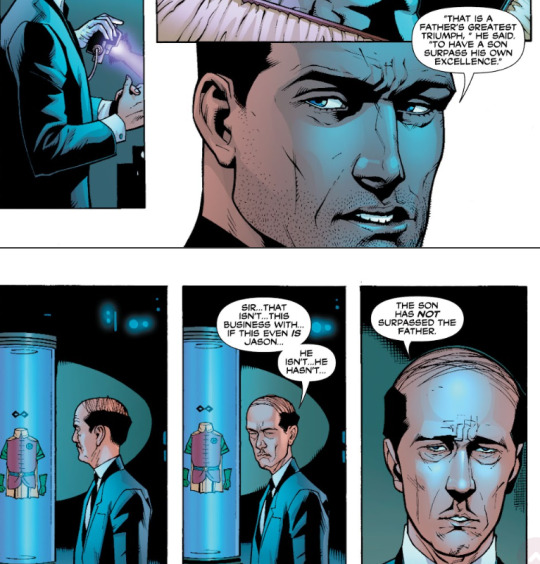
Victim blaming - Jason deserved to die because he didn’t follow orders. Jason deserved to die for not following his training. Jason deserved to die because he was an angry Robin (oh no a child had an appropriate reaction to sexual violence). Jason deserved to die for being human.
Infantilization - Jason is repeatedly infantilized in contrast to Bruce. When given the ultimatum at the end of UtRH, Bruce speaks to Jason like a child, or a bad dog. Ordering him to do things like, “enough!” or “stop this now.” Bruce knows what’s best for Jason (and for everyone in the entire world), we should really just take his word for it and not the victim’s. Imagine staring at a 6 foot wall of a man and scolding him like a child. Beyond that, as mentioned above, his views of love and safety are framed as childish. Even though they are actually leaning more toward collectivism rather than the rampant individualism that Bruce so strongly defers to. (also, just a side note, collectivistic methods in healing from trauma is actually the only scientifically reliable way to heal. Every other method has absolutely abysmal results and higher rates of relapses.)
Silenced and Safety Villainized - Jason is silenced in his own story, acceptable and honored when he was dead and met with vitriol in life. All of the love given to him as Robin turns to ash as soon as he collides with Bruce’s power and morals. I think any survivor can relate to the experience of being told that what happened to them was a long time ago and it’s time to move on. Or even that they’re leveraging their own safety to get what they want in a manipulative way. Regardless of whether or not there was any accountability or justice for the harm done to them. Alfred asks Bruce if he should remove Jason’s memorial in the cave like two seconds after learning of his resurrection because Jason’s methods of securing safety for himself and using his own voice to define his story. Bruce was able to tell Jason’s story when he died. He was able to memorialize, grieve, and ultimately define Jason’s story because Jason wasn’t there to speak for himself. When Jason does speak for himself, he is villainized and literally stripped of his past significance as Robin (or a good victim) by Alfred within seconds. This is reflected in real life with adoptee advocates speaking about how adoption is unethical/harmful/traumatizing and subsequently being framed as ungrateful, selfish, etc. They were little perfect victims without voices before they grew up and could speak for themselves.
Erased - Gestures at the entirety of how Jason is either talked about or completely erased during the 90s Tim Robin run. He wasn’t convenient to talk about, as victims rarely are. This also ties into how Steph’s death was erased and Babs was written like she “won” at trauma by simply... beating it???
Dangerous - Jason is framed as threatening the basic fabric of society (in a story with vigilantes this is hard to do, so they have him oppose the no-kill rule, and then doubled down on Bruce’s characterization of no-killing). Anything that bucks the status-quo is usually marked as villainous in mainstream vigilante/superhero comics, but this is a step beyond that into the interpersonal and political sphere. Hysterical women are often framed as dangerous, villains, snakes, and treacherous (the other side of this coin is weak, pathetic, and pitiable) because they are victimized and then have the audacity to do something to the system about it. Whether that be the system of their immediate families or the political sphere. I don’t think it’s a coincidence that Jason was paired with Talia in Lost Days to hammer this point home to the reader. It could’ve just as easily been anyone with access to the Pit that rescued him, but no, we had DC’s favorite brown, treacherous, venomous, female punching bag.
Bruce Wayne, The Batman
Bruce fits well into the father, enforcer, and logical man slot in Jason’s hysterical story. There is a history of ownership throughout women’s history when it comes to their subjugation to men. Women actually couldn’t be put on trial before the witchcraft genocide because they weren’t seen as legally a person. Their male owner would be put on trial instead. Women would go from being owned by their fathers to their husbands after entering marriage, the most dangerous woman being one who isn’t owned (orphaned, widowed). Bruce does treat (and even thinks) about Jason like he’s something that he owns. He’s his protege, his son, and his responsibility.
The narrative function of Bruce as a perpetrator in Jason’s story.
“The perpetrator asks the bystander (reader) to do nothing. He appeals to the universal desire to see, hear, and speak no evil. The victim, on the contrary, asks the bystander (reader) to share the burden of pain. The victim demands action, engagement and remembering” (Herman).
Bruce does remember what happened to Jason. He keeps a permanent memorial to his dead son. However, this doesn’t translate into any kind of tangible action. He doesn’t do anything to actually stop the murderer who took his son’s life and he continues to throw child soldiers at the problem of crime (how many children have died for the sake of his no-kill rule at this point?). When met with the reality of his inaction, he fits into the perpetrator’s role like a glove:
“In order to escape accountability for his crimes, the perpetrator does everything in his power to promote forgetting. Secrecy and silence are the first line of defense... If secrecy fails, the perpetrator attacks the credibility of his victim. If he cannot silence her absolutely, he tries to make sure that no one listens... From the most blatant denial to the most sophisticated and elegant rationalization... One can expect to hear the same predictable apologies: it never happened; the victim exaggerates; the victim brought it upon herself; and in any case it’s time to forget the past and move on. The more powerful the perpetrator, the greater his prerogative to name and define reality, the more completely his arguments prevail” (Herman).
I think it is simply fact at this point that Bruce is the head patriarch in Gotham if not, arguably, in the entirety of DC. That level of power in the narrative cannot be ignored, especially when faced with the very real, screaming voice of a victim that Bruce uses all of that power to silence. Bruce, because of his status as patriarch, default protagonist, and self-insert for the toxic male power fantasy, has the ultimate power to name and define reality. Especially to the reader. Bruce doesn’t deny what happened to Jason, because that’s physically impossible to do. But what he does do is ensure that no one listens to Jason, discredits him, and rationalizes his own inaction, actions of violence towards Jason, and victim blames.
Here’s Bruce using the most base form of denial and victim blaming:
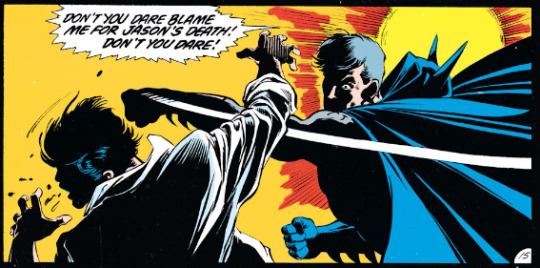

After this panel, Bruce also revokes Dick’s access to his childhood home simply for asking a question.
This theme extends to other members of the batfam because of Bruce’s narrative power over them. It’s why we can’t have Dick, Steph, Babs, or even Damian step in and relate to Jason’s trauma or vindicate him. Even when we, the readers, can see parallels and wonder why these conversations or bonds aren’t forming. Jason HAS to be a lone wolf because he is hysterical and a threat to the system of power. This also shows why most of his runs in group settings outside of the batfam fall apart or fall flat. If he was humanized by any other character or had his trauma validated in any actionable way, it would be recognizing the failure of the toxic male power fantasy. The readers are not supposed to see the flaw in this system that allows the bodies of children to pile up and sympathize with one of their voices. It would be a crack in the system of power that exists not only in the source material, but very much within our real world.
Side note: Jason is allowed to interact with others in a wholesome and validating way when he no longer threatens the systemic power of Bruce. When he is silenced by the writers and plays the “nice victim” (like Babs does), he is allowed connection. Only when his healing is done in a way that doesn’t demand action and is only his personal responsibility (gotta love the rampant individualism). If he is hysterical, demands action, and asks for someone to be held accountable for his death, he is shoved away into a lone wolf box. Examples: Gotham Knights (from my very basic understanding, I haven’t played the game, only seen play throughs) and WFA. Victims are acceptable if they do their healing in a neat little box and stay there, but hysterics are the ones who step outside of that box.
Red Hood, The Political Voice of Hysteria and Trauma
Red Hood is deeply political in terms of hysteria and trauma. Herman stated that victims and those that authentically care for them or listen to them intently (whether that be interpersonally, clinically, or professionally) are silenced, ostracized, and discredited. Survivors need a social context that supports the victim and that joins the victim and witness in a common alliance. On an interpersonal level this looks like family, friends, and loved ones. However, trauma is systemic and the social context mentioned above must also be given on a wider social scale. For this to be done, there had to be systemic change and political action. Jason had the interpersonal social support and witnesses to his trauma ripped from him by Bruce. So, we see him move onto a systemic level of addressing trauma in his own political way. He literally cannot escape Bruce and this constant trigger because of Bruce’s philosophy and just... fucking power to define reality... being re-enforced constantly in DC no matter where he tries to go. So, he tries to heal by taking the systemic issue of perpetrators who cannot be held accountable or have fallen through the cracks of accountability into his own hands in a very personal way. A one man political movement.
Whether his methods are moral or ethical doesn’t really matter in the overall framing him as hysteric. He simply has to be opposed by the male power fantasy in some significant way. This shows that the goals, needs, and work towards victim’s and the marginalized’s freedom is dangerous, doomed to fail, and ultimately unethical if the victim is framed in a villain light instead of the more pathetic/pitiable iteration of hysteria.
You can see how this is not only problematic but also reflects the real world values instilled in arguments against human rights movements (which are intrinsically tied to victims rights). Defunding the police is dangerous, the MeToo movement is dangerous, abolition is dangerous, trans rights are dangerous, etc etc etc. Think of the victims voices tied to each of these movements and how they are integral to the real change offered by these political movements. You can’t have human rights violations without creating victims. And you can’t have political movements surrounding human rights without listening to victims.
We can also see how the individuals within these movements are ostracized, villianized, and often silenced (sometimes ultimately silenced with death) because they rally against the systems of power that victimized them. The framing of traumatized, vulnerable people as hysterical is integral to upholding the system of power that traumatizes and harms them.
A popular comic book movie adaptation that highlights the importance of Jason’s hysterical framing and how it impacts the political narrative/how he is written is V for Vendetta. To be fair, it received an insane amount of backlash by conservatives (not within leftist or liberal spaces) for V’s methods in over throwing fascism, but only because of the movie’s release date being so close to 9/11. V and Jason have many parallels, it’s only the lack of hysterical framing that makes V more palatable to the viewer. We are told, not shown through behavior, that V is traumatized by his past and he does not pick a fight with the protagonist that functions as a toxic male power fantasy. He is the protag, with his version of Bruce being men who are not framed in a sympathetic, heroic, or relatable light.
Additionally, there is literally an unemoting mask standing between the viewer and V, whereas Jason takes off his helmet to allow the reader to see every aspect of his trauma and pain. V readily dehumanizes himself into an idea, rather than a person. Whereas Jason screams to be seen as a person in a very hysterical way. So, we can see how the framing of Jason as hysteric against the logical, heroic man greatly impacts how the audience reads him when contrasted by a very similar political story/character who uses similar (and arguably more violent) methods to meet his ends. (This just made me realize that I would die for a Jason adaptation written by the Wachowski sisters).
Jason’s work as Red Hood is seeped in leftist, victim, and community centered politics. His portrayal as a hysterical antagonist (at best an anti-hero) is rooted in misogyny and upholding patriarchal, capitalist, and the prison industrial complex systems of power. He is the righteous embodiment of “the personal is political” for victims. Even his Robin run draws attention to and shows correct, angry reactions to the system of patriarchal power in sexual violence.
Patriarchal Writing and Enforcement
Jason is girl-coded and hysterical because he’s supposed to be emasculated, discredited, and disliked by the reader. He serves the narrative function of boosting the toxic male power fantasy of Bruce and in doing so, the writers use one of the oldest tropes in the book (one that we have all subconsciously been taught since birth) to get the reader on their side. Make him a hysterical woman.
References: for anyone interested in furthering their understanding of any of the concepts mentioned above and to, you know, use sources for my own writing.
Barstow, A. Witchcraze
Bondi, L., Burman. E. Women and Mental Health: A Feminist Review
Freud, S. The Aietology of Hysteria
Gilman, C. P. The Yellow Wallpaper
Herman, J. Trauma and Recovery
Ussher, J. The Madness of Women.
Van der Kolk, B. The Body Keeps the Score
Wilkin, L., Hillock, S. Enhancing MSW Students’ Efficacy in Working with Trauma, Violence, and Oppression: An Integrated Feminist-Trauma Framework for Social Work Education
#jason todd#bruce wayne#hysteria#dc#meta#clovis writes#listen I regularly have to write 20-30 page research papers on therapy theory and mental health#I'm so sorry this is so long but it is actually impossible to shorten it#one of my profs once said I write in a way that's academic but still readable and know the meaning of brevity#and I was like: sir I've never been accused of brevity before#this took 3 days to write and get my thoughts straight on it#remember: you asked for this lol#holy fuck the word count on this is nearly 5k I'm so sorry#I literally can't proof read this because my brain has shut off from reading this post#there's probably some stuff misspelled and also missing from this but I'm done with it lol
483 notes
·
View notes
Text
Frev nicknames compilation
Maximilien Robespierre – the Incorruptible (first used by Fréron, and then Desmoulins, in 1790).
Augustin Robespierre – Bonbon, by Antoine Buissart (1, 2), Régis Deshorties and Élisabeth Lebas. Élisabeth confirmed this nickname came from Augustin’s middlename Bon.
Charlotte Robespierre – Charlotte Carraut (hid under said name at the time of her arrest, also kept it afterwards according to Élisabeth Lebas). Caroline Delaroche (according to Laignelot in 1825, an anonymous doctor in 1849 and Pierre Joigneaux in 1908).
Louis Antoine Saint-Just – Florelle (by himself), Monsieur le Chevalier de Saint-Just (by Salle and Desmoulins)
Jean-Paul Marat – the Friend of the People (l’Ami du Peuple) (self-given since 1789, when he started his journal with the same name)
Georges-Jacques Danton – Marius (by Fréron and Lucile Desmoulins).
Éléonore Duplay – Cornélie (according to the memoirs of Charlotte Robespierre and Paul Barras. Barras also adds that Danton jokingly called Éléonore “Cornelie Copeau, the Cornelie that is not the mother of Gracchus”)
Élisabeth Duplay – Babet (by Robespierre and Philippe Lebas in her memoirs)
Jacques Maurice Duplay – my little friend (by Robespierre), our little patriot (by Robespierre)
Camille Desmoulins – Camille (given by contemporaries since 1790. Most likely a play on the Roman emperor Camillus who saved Rome from Brennus in the 4th century like Camille saved the revolution on July 12, and not a reference to Camille behaving like a manchild to the people around him like is commonly stated.) Loup (wolf) by Fréron and Lucile (1, 2), Loup-loup by Fréron (1, 2), Monsieur Hon by Lucile.
Lucile Desmoulins – Loulou (by Camille 1, 2), Loup by Camille, Lolotte (by Camille (1, 2), Rouleau by Fréron (1, 2) and Camille, the chaste Diana (by Fréron), Bouli-Boula by Fréron (1, 2).
Horace Desmoulins – little lizard (Camille), little wolf (Ricord), baby bunny (Fréron).
Annette Duplessis (Lucile’s mother) — Melpomène (by Fréron), Daronne (by Camille)
Stanislas Fréron – Lapin (bunny) (by himself (1, 2, 3, 4, 5) and Lucile. According to Marcellin Matton, publisher of the Desmoulins correspondence and friend of Lucile’s mother and sister, Fréron obtained this nickname from playing with the bunnies at Lucile’s parents country house everytime he visited there, and Lucile was the one who came up with it). Martin by Camille and himself (likely a reference to the drawing ”Martin Fréron mobbed by Voltaire” which depicts Fréron’s father Élie Fréron as a donkey called ”Martin F”.)
Manon Roland — Sophie (by herself in a letter to Buzot).
Charles Barbaroux — Nysus by Manon Roland
François Buzot — Euryale by Manon Roland
Pierre Jacques Duplain — Saturne (by Fréron)
Guillaume Brune — Patagon (by Fréron)
Antoine Buissart (Robespierre’s pretend dad from Arras) — Baromètre (due to his interest in science)
Comment who had the best/worse nickname!
#french revolution#robespierre#danton#desmoulins#buzot#barbaroux#marat#fréron#maximilien robespierre#charlotte robespierre#augustin robespierre#camille desmoulins#lucile desmoulins#horace desmoulins#stanislas fréron#georges danton#manon roland#saint-just#louis antoine de saint just#élisabeth lebas#élisabeth duplay#éléonore duplay#fréron really likes nicknames…#frev compilation
163 notes
·
View notes
Text
Royal Reads: Jan-Mar 2024
Note: Some of the following links are affiliate links, which means I earn a commission on every purchase. This does not affect the price you pay.
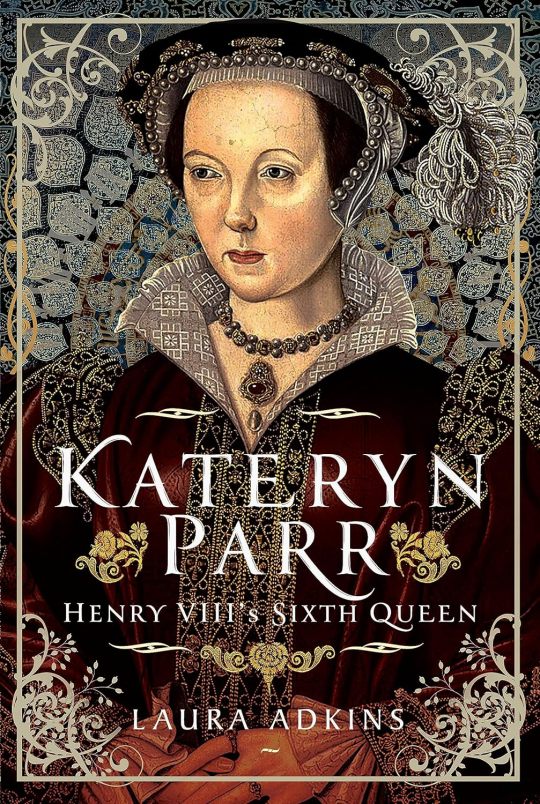

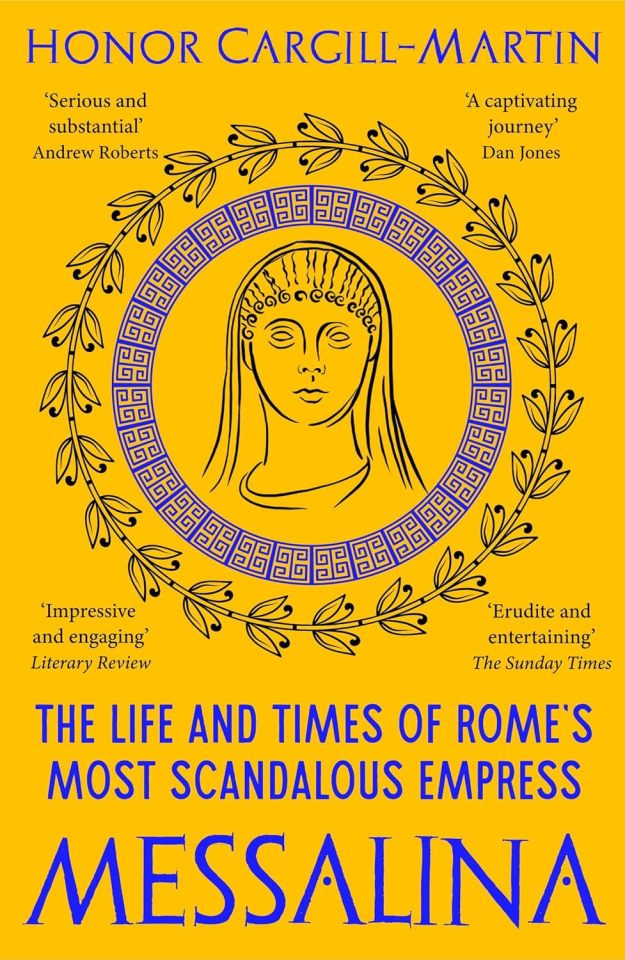
Kateryn Parr: Henry VIII's Sixth Queen by Laura Adkins (Mar. 15, 2024) // Anne Boleyn & Elizabeth I: The Mother and Daughter Who Changed History by Tracy Borman (new paperback version published Mar. 7, 2024) // Messalina: The Life and Times of Rome’s Most Scandalous Empress by Honor Cargill-Martin (Mar. 14, 2024)
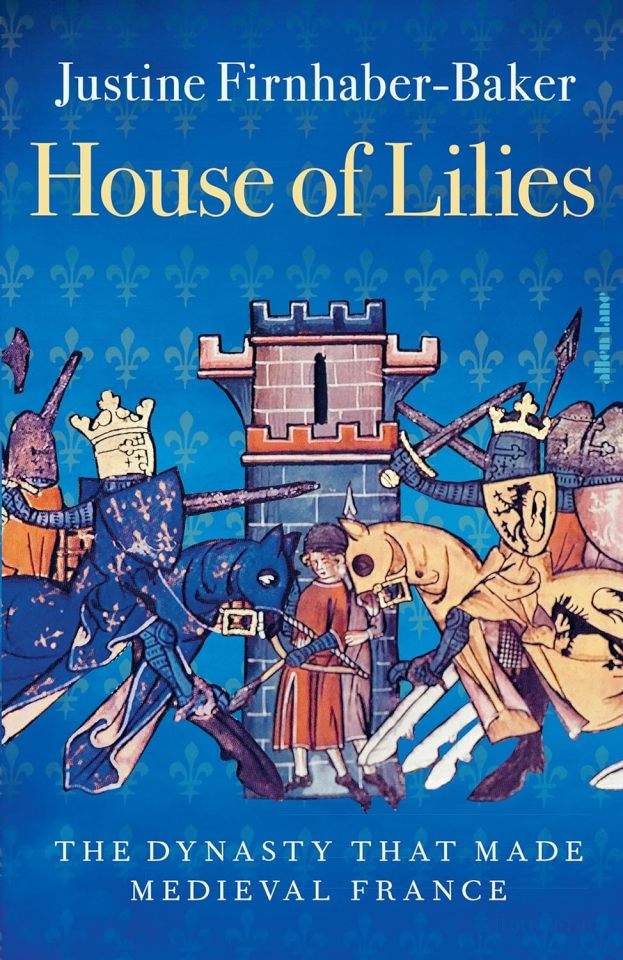
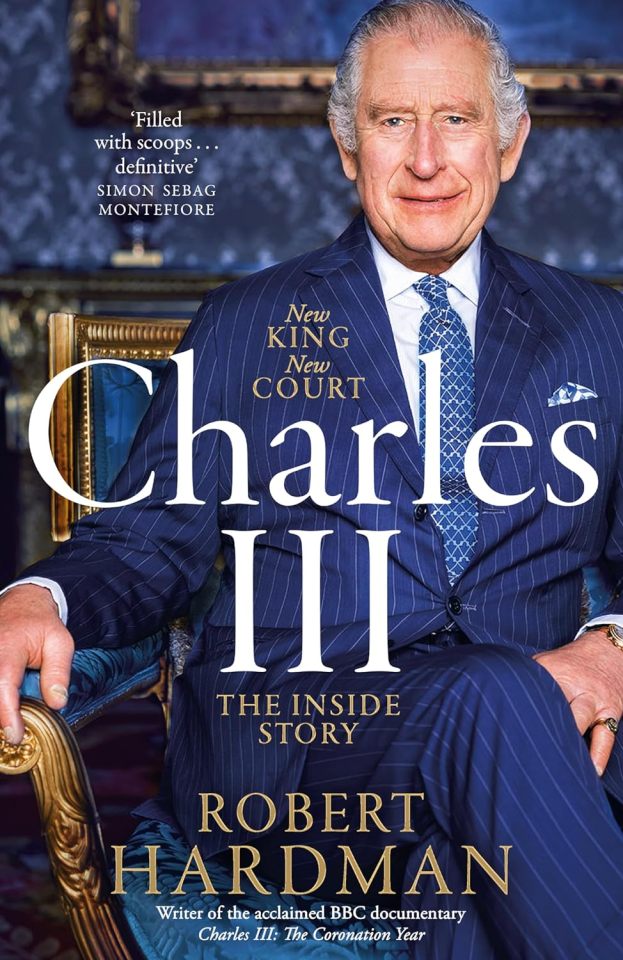
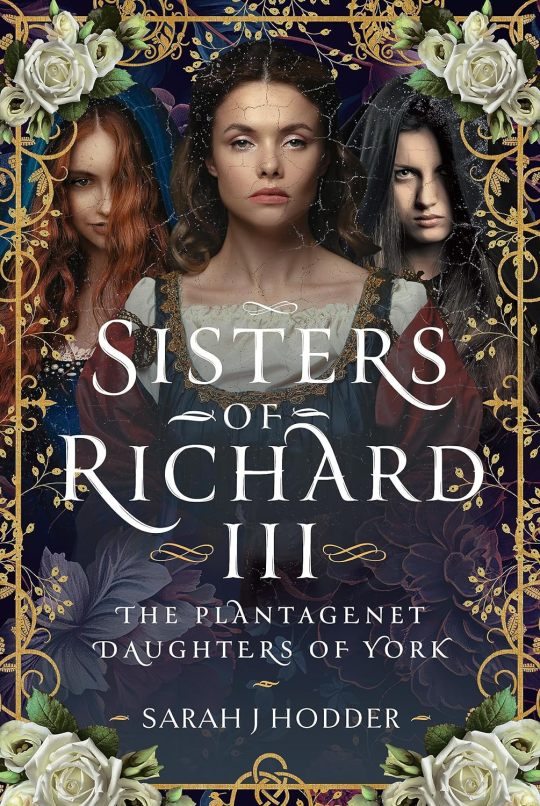
House of Lilies: The Dynasty that Made Medieval France by Justine Firnhaber-Baker (Mar. 28, 2024) // Charles III: New King. New Court. The Inside Story. by Robert Hardman (Jan. 18, 2024) // Sisters of Richard III: The Plantagenet Daughters of York by Sarah J Hodder (Mar. 15, 2024)
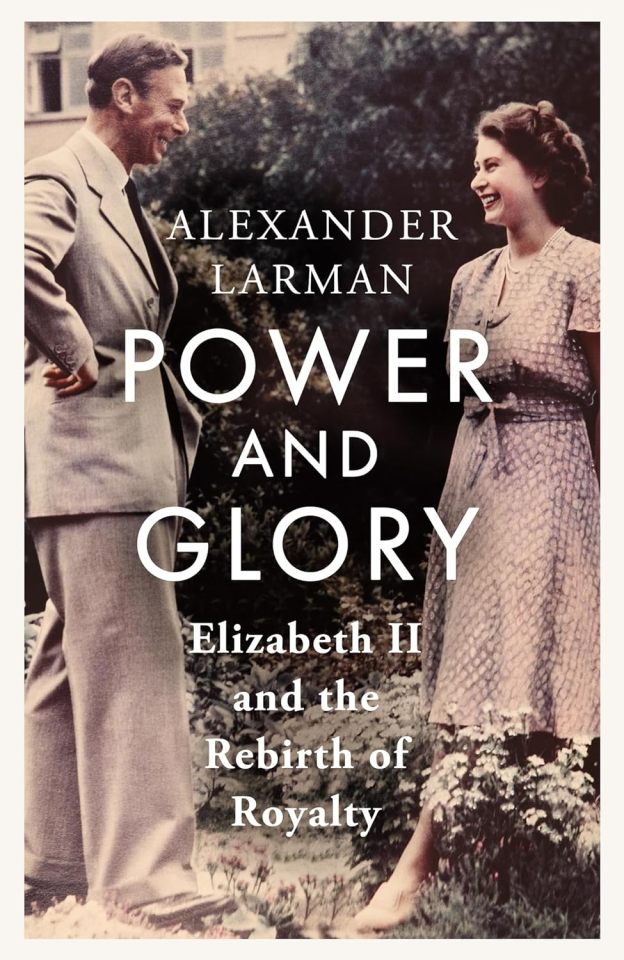
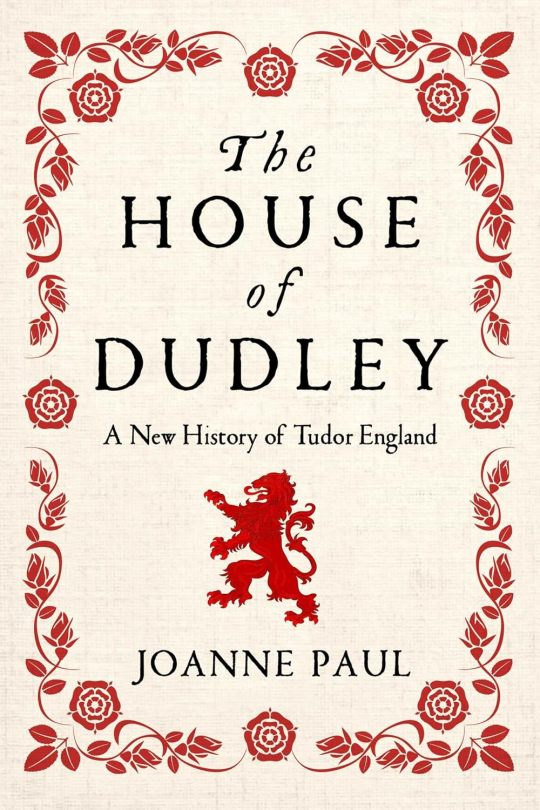
Power and Glory: Elizabeth II and the Rebirth of Royalty by Alexander Larman (Mar. 28, 2024) // The House of Dudley: A New History of Tudor England by Joanne Paul (new paperback version published Jan. 9, 2024)
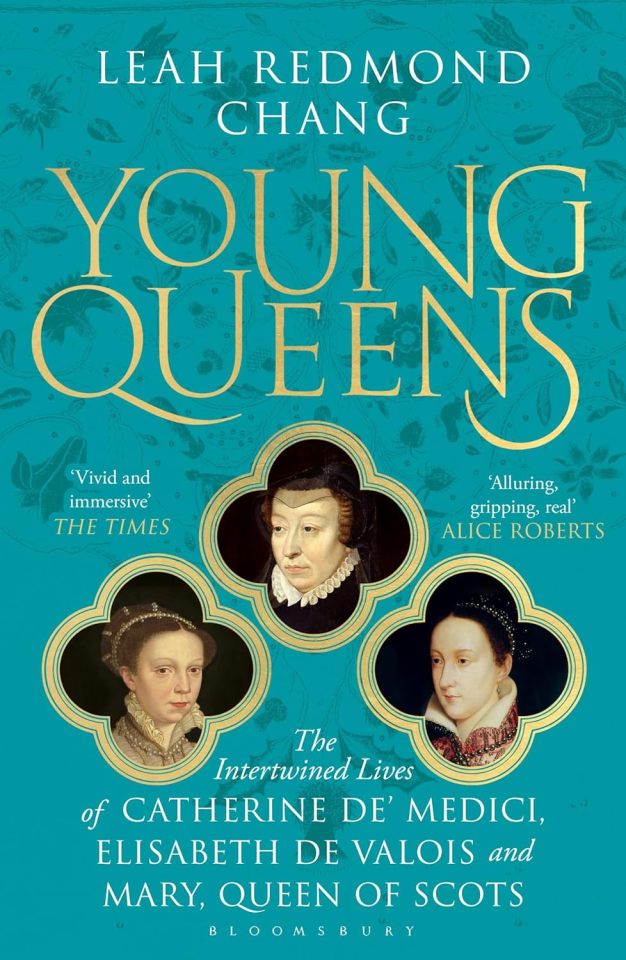
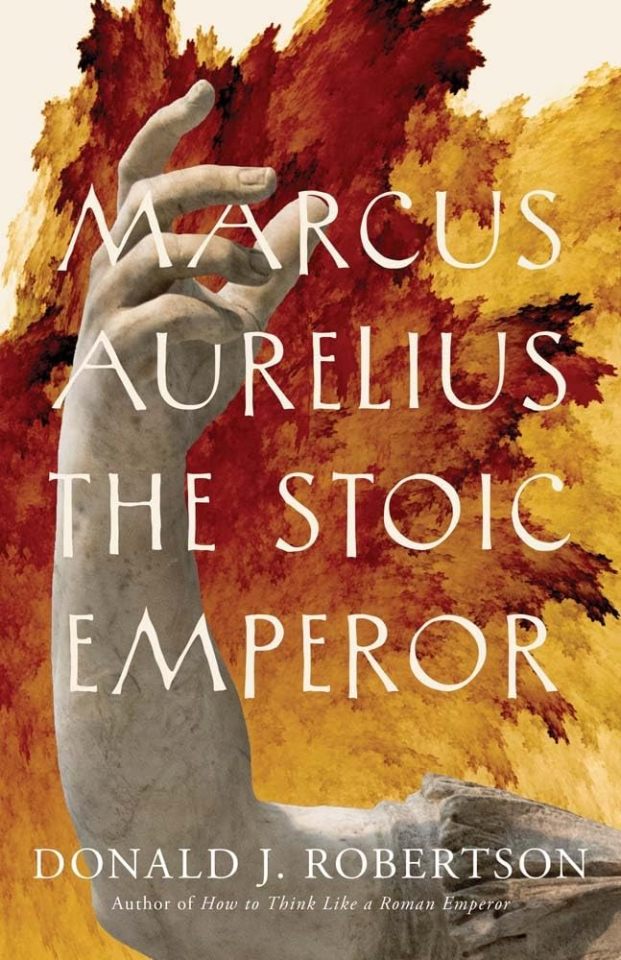
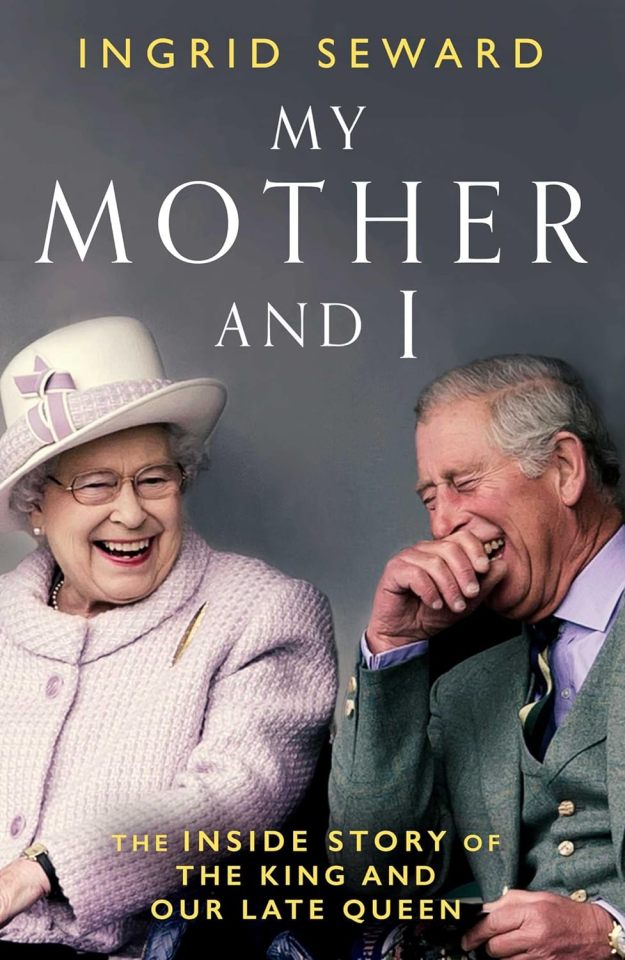
Young Queens: The Intertwined Lives of Catherine De' Medici, Elisabeth de Valois, and Mary, Queen of Scots by Leah Redmond Chang (new paperback version published Feb. 29, 2024) // Marcus Aurelius: The Stoic Emperor by Donald J. Robertson (Mar. 26, 2024) // My Mother and I by Ingrid Seward (Feb. 15, 2024)
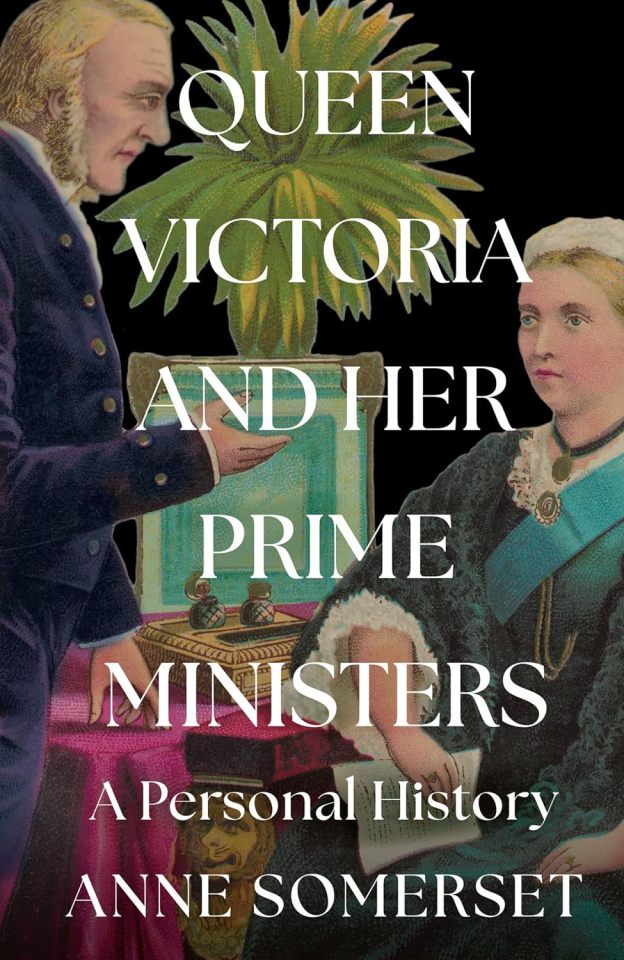
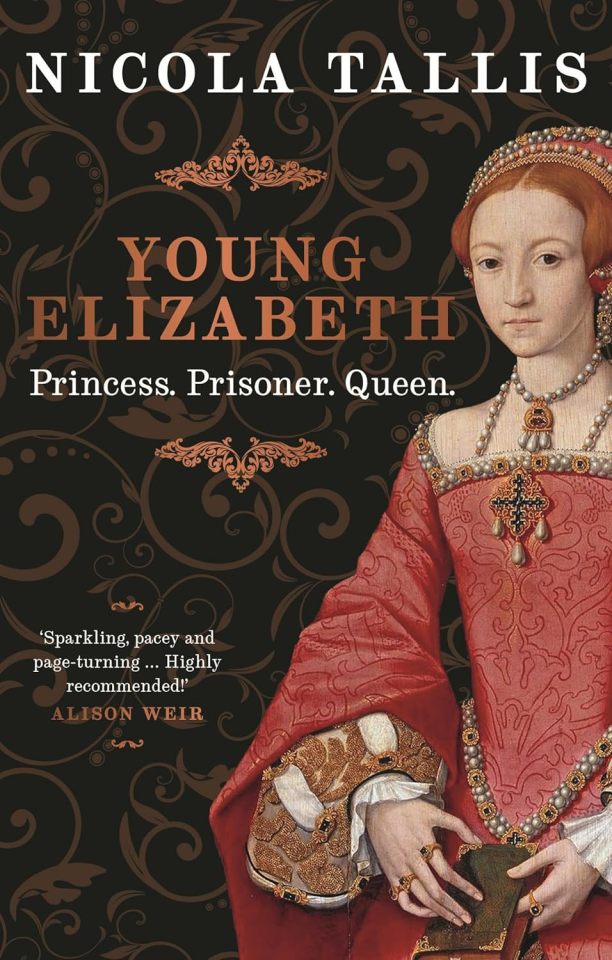
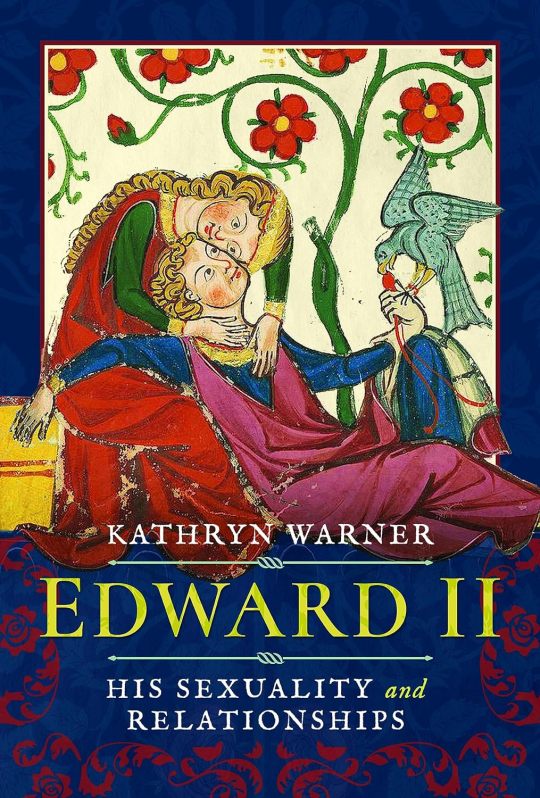
Queen Victoria and her Prime Ministers: A Personal History by Anne Somerset (Mar. 28, 2024) // Young Elizabeth: Princess. Prisoner. Queen. by Nicola Tallis (Feb. 29, 2024) // Edward II: His Sexuality and Relationships by Kathryn Warner (Mar. 15, 2024)
#literature#affiliate links#catherine parr#anne boleyn#elizabeth i#valeria messalina#king charles iii#anne of york#elizabeth of york#margaret of york#queen elizabeth ii#catherine de medici#isabel de valois#mary queen of scots#marcus aurelius#queen victoria#edward ii
31 notes
·
View notes
Text
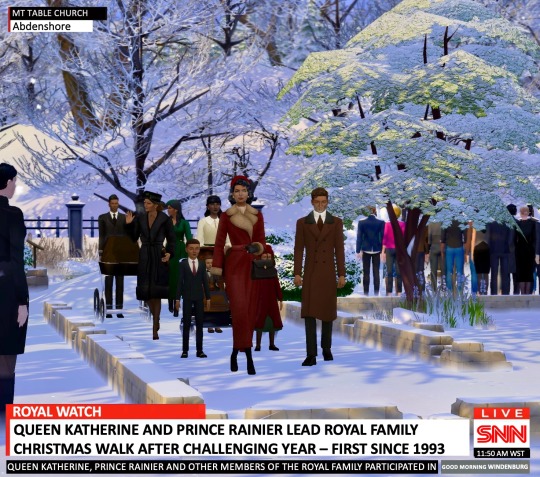
By Cameron Dorly | Published by SNN
ABDENSHORE, Brindleton Bay (SNN) - - Queen Katherine I and Prince Rainier celebrated the second Christmas of her reign.
Last year — during the first Christmas of Queen Katherine's reign, taking place just months after the death of her father, King George I — the royals did not partake in any of their traditional holiday outings. Queen Katherine had also given birth to twins less than 45 days prior.
Yesterday morning, numerous members of the House of Windsor stepped out to attend the Church of Mt Table Church. As they walked to and from Christmas service, they greet the members of the public who came out to wish them a Merry Christmas. Queen Katherine and Prince Rainier led the royals, joined by Katherine's son and heir Prince Phillip, and their other children Princes Grace, and twins Prince Michael and Prince Samuel (in their Christmas walk debut!).
Longstanding traditions were kept, from exchanging gag gifts on Christmas Eve to a festive turkey feast following the church outing at Beaverdam.

Directly following the Queen and Prince consort was the Queen Mother and the Earl and Countess of Boykins with their newborn son, Eli.

The Queen and Princess Grace coordinated in reds for the holiday, while the boys opted for suits.

As per royal family tradition, the royal kids likely didn't open their presents that morning, but on Christmas Eve night.
In a 2017 interview, The Queen (then Princess of Brindleton Bay) spoke about the royal family's Christmas Eve traditions: "We were at Sumpterson in a big room with a long table covered with white cloth and white name cards. By custom, at the start of the night, each of us located our place, stood before our mound of presents. Then suddenly, everyone began opening at the same time. A free-for-all, with scores of family members talking at once and pulling at bows and tearing at wrapping paper."

The Kent family followed behind the Boykins. Prince Louis and Margot smiled at awaiting sims as they walked into church service.
Of the Christmas walk tradition specifically, Prince Louis said “I have strong memories of walking down here, and my father [King Edward II], he used to walk so fast that there’d be huge gaps and spaces between all of us walking down, and there’d be us at the back with little legs trying to keep up,” Louis continued. “You know, I think over time you start to feel quite attached to those moments and those memories before, especially with mom's recent passing.”
Their grandchildren, Lady Sadira Grimaldi and Lord Martin Grimaldi, followed directly behind.

The Duke and Duchesses eldest son and heir, Prince Leo, followed with his wife and son, Lady Jazmyn and Lord Jackson.
His sister, Princess Anna, who seems to have rekindled her on-again off-again romance with estranged husband, Marsh Grimaldi, followed.
The Duke and Duchess of Hastings followed the Kents. Their two children were slated to join but the unexpected snow storm delayed their arrival.

Aside from a few years in the 1960s when the royal family spent the holidays at Windsor Castle, they always stayed at Beaverdam Castle for Christmas and New Year's, which meant that come Christmas Day, they attended services at Mt Table. After George I became King, he preferred Sumpterson Estate for Christmas and New Years.
The Queen, who favors Beaverdam, is returning to the tradition of the royal family spending Christmas and New Year's at Beaverdam.

As the Queen left church, the royal twins were seen quite tired and fussy by sims who had gathered to catch a glimpse of the royals on Christmas day.
After greeting the public, they returned to Beaverdam for a Christmas lunch that included a traditional feast of turkey, glazed ham, roasted potatoes, parsnips, Brussels sprouts and Christmas pudding, after which they viewed the Queen’s annual Christmas speech, which aires at 3 p.m. U.K. time each year.
#SNN has the tea#SNN on ts4#simshousewindsor on SNN#simshousewindsor#simshousewindsor ts4#ts4#ts4 royalty#sims 4 simblr#simshousewindsor monarchy#simshousewindsor simblr#simshousewindsor royalty#sims 4 monarchy#simblr#ts4 monarchy#the sims 4 royalty#simshousewindsor Christmas
7 notes
·
View notes
Text
Ryu Number: Alice (i.e. of Wonderland)
Okay, I know what you're thinking. K.C., are you really churning out a post on Alice's Ryu Number? Sora is in Smash, for goodness' sake. That's Kingdom Hearts, which gets you the Disney version split-lickety.

Yeah, that's true. And it would be perfectly reasonable to shut the book on the matter right there and shout, "Problem solved!" But here's a question: Are Alice of Wonderland and Alice Liddell the same person?
That's a rhetorical question, by the way. If a century of Alicologists aren't going to come to an agreement, an opinion off the end of a tumblr post is unlikely to set off a scholarly paradigm shift. For what it's worth, Lewis Carroll himself seemed to consider Liddell and the literary Alice as separate individuals—the latter as more of an idealization than any real person*—but he's got some investment in the matter, so he's not exactly a reliable source.
(This is a joke. Don't at me.)
*Woolf, J. (2010). The Mystery of Lewis Carroll. St. Martin's Press.
... But we're not here for literary analysis, of course. We're here for the Ryu Numbers. So what's Alice Liddell's?
The most obvious route, of course, would be through American McGee's American McGee's Alice and Alice: Madness Returns video games. The lore of the second game straight out gives Alice the surname Liddell...

... and the opening cutscene of the first game features a photograph in Alice's bedroom of someone who might be Lewis Carroll (which is a bit weird, but whatever), as well as an Alice storybook (meaning Alice exists one narrative layer higher than the literary Alice).
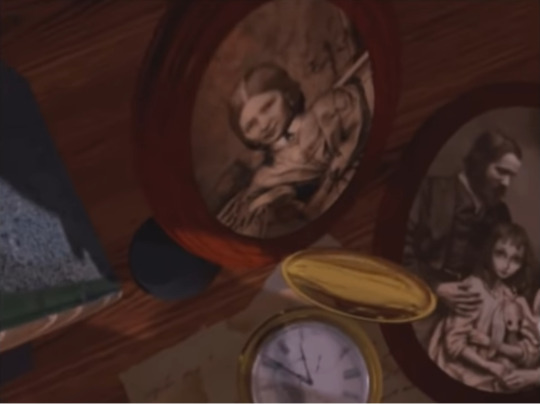
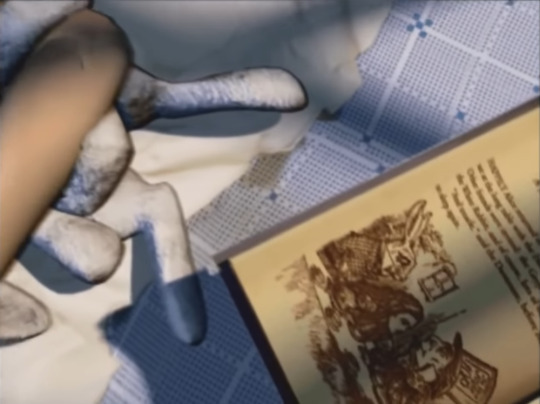
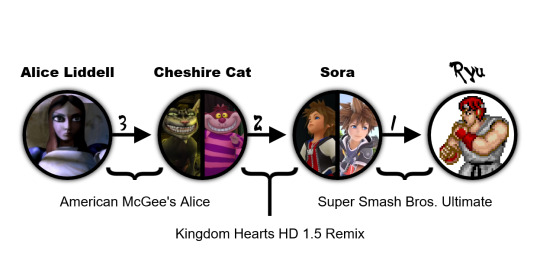
...That said, if American McGee did mean for the game Alice Liddell to be the Alice Liddell, that's something it looks like he walked back in game two (or at least went in with plausible deniability about). Game Alice seems to have had just the one sibling, an older sister named Elizabeth, and her father's name was Arthur—the real Alice, on the other hand, had nine siblings in all (jeez), with her only older sister named Lorina and her father named Henry.
(Also all the Wonderland elements explicitly take place in Alice's head, which means technically we shouldn't be counting Wonderland characters any more than we'd count characters that show up in dreams or hallucinations, but I'll pretend not to notice if you pretend not to notice, alright? Call it the Code Name: S.T.E.A.M. precedent.)
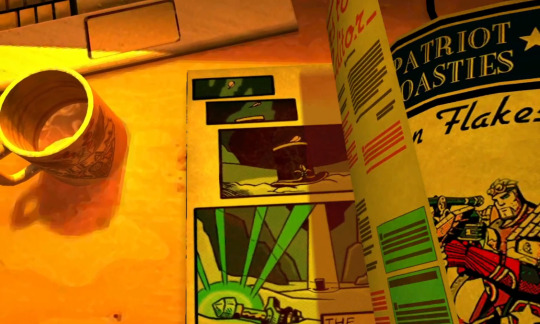
To get to something plausibly Liddeller, I'ma jump back to the Apple II/Commodore 64 era.
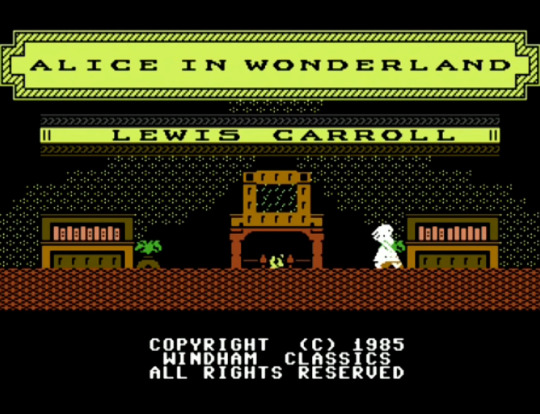
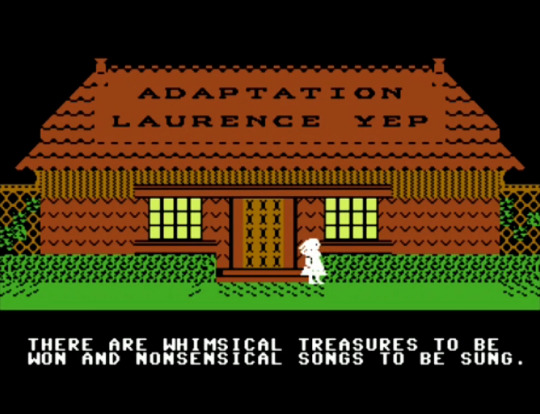
Wait, the Laurence Yep? Aunno, maybe! I wrote to him once, because I wanted to know if the Charles Edward Stuart that appears in this game is actually Charles Edward Stuart, or just the White King believing himself to be Charles Edward Stuart, both of which seemed likely enough to me given the setting.
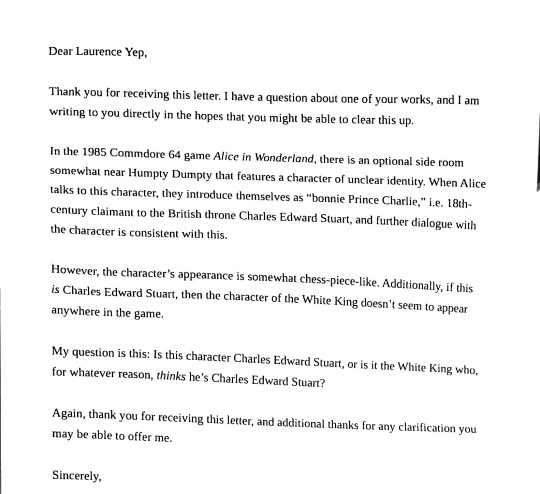
I never got an answer back, probably because I couldn't find any contact info for Laurence Yep and ended up writing to the most recent publisher of his works I could find instead. What I'm saying is that I doubt Mr. Yep ever laid eyes on my letter before it was slam-dunked into the nearest wastebin (Mr. Yep if you are reading this please DM me).
Anyway, shortly before Alice falls into the rabbit hole, gets swept up in the usual Wonderland annoyances, then finally makes her way up and out the same rabbit hole (i.e. no "it was all a dream," it's happening for realsies), Alice runs into a dude on a boat. It's Lewis Carroll, and you know he's Lewis Carroll because he says he's Lewis Carroll.
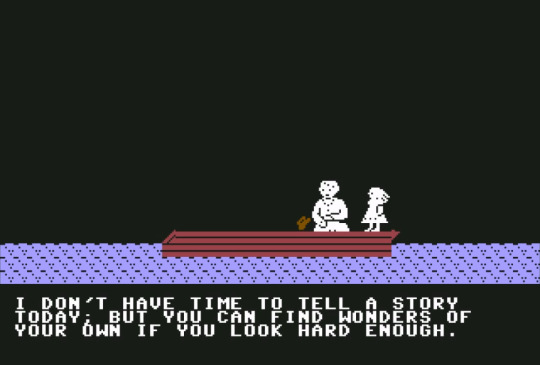
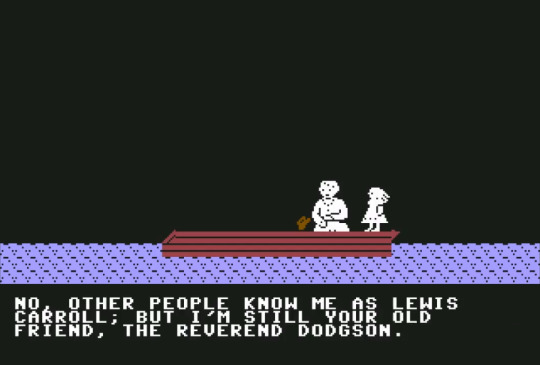
Add that that he's a teller of stories to this Alice, and and it serves as good implication as any that the player character is the historical Alice Liddell.
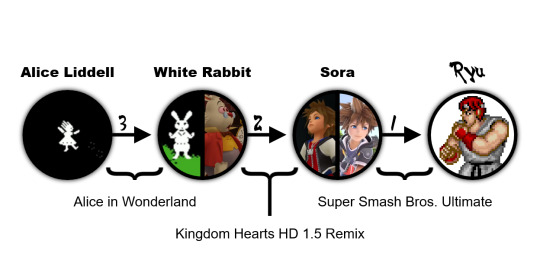
#ryu number#alice#alice liddell#ryu#super smash bros. ultimate#sora#kingdom hearts#kingdom hearts hd 1.5 remix#cheshire cat#american mcgee's alice#white rabbit#alice in wonderland
112 notes
·
View notes
Text


Beyond, and modestly subsidiary to the tsarevich's larger apart ments - just as its occupants had been secondary to him in the eyes of the nation - were the bedrooms, classroom, dining and reception rooms of his four older sisters: Olga, Tatiana, Maria and Anastasia Their light and spacious bedrooms were furnished with simple ivory-painted and polished lemonwood furniture and English chintz fabric curtains. A stencilled frieze of pink roses and bronze butter flies above pink coloured wallpaper had been chosen by the younger sisters Maria and Anastasia For Olga and Tatiana, the frieze was of convolvulus flowers and brown dragonflies. On the girls' matching dressing tables there was still a scattering of boxes, jewellery cases, manicure sets, combs and brushes - just as they had left them. Elsewhere, on their writing tables, were piles of their exercise books with multicoloured covers, and in profusion on every surface, framed photographs of family and friends. Yet in the midst of so much typical, girlish ephemera, one could not fail to notice the presence everywhere in the sisters' rooms of icons and popular religious prints and pictures. By their bedsides there were gospels and prayer books, crosses and candles - rather than the usual clutter one might expect to find.
Rappaport, Helen. The Romanov Sisters: The Lost Lives of the Daughters of Nicholas and Alexandra. United States: St. Martin's Publishing Group, 2014.
1st photo of Maria and Anastasia Romanov's bedroom, 2nd photo of Olga and Tatiana's bedroom by Alexander Palace Time Machine
#ooc: post#ooc: history#otmaa#anastasia nikolaevna#anastasia romanov#olga nikolaevna#olga romanov#tatiana romanov#tatiana nikolaevna#maria romanov#maria nikolaevna#romanov family
9 notes
·
View notes
Text

"The Mists of Avalon is a 1983 historical fantasy novel by American writer Marion Zimmer Bradley, in which the author relates the Arthurian legends from the perspective of the female characters. The book follows the trajectory of Morgaine (Morgan le Fay), a priestess fighting to save her Celtic religion in a country where Christianity threatens to destroy the pagan way of life. The epic is focused on the lives of Morgaine, Gwenhwyfar (Guinevere), Viviane, Morgause, Igraine and other women of the Arthurian legend."
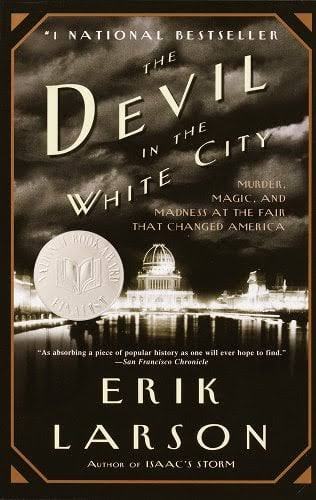
"The Devil in the White City is a 2003 historical non-fiction book by Erik Larson presented in a novelistic style. Set in Chicago during the 1893 World's Columbian Exposition, it tells the story of World’s Fair architect Daniel Burnham and of H. H. Holmes, a criminal figure widely considered the first serial killer in the United States."
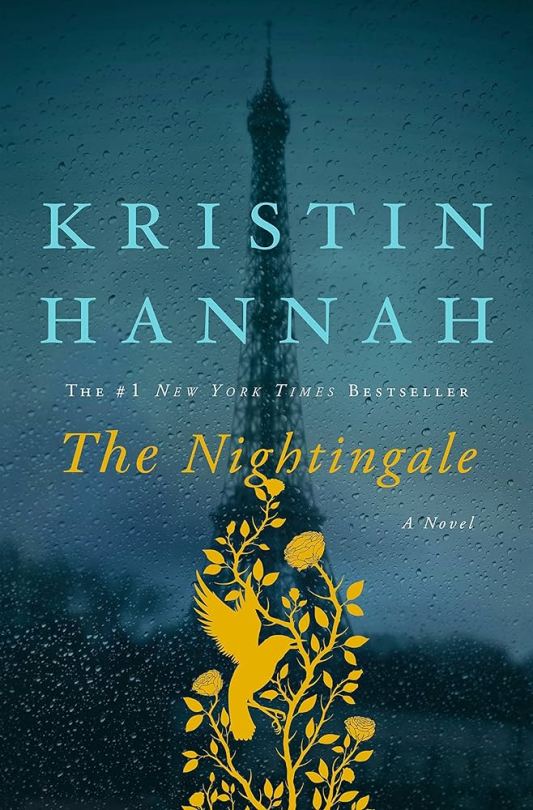
"The Nightingale is a historical fiction novel by American author Kristin Hannah published by St. Martin's Press in 2015. The book tells the story of two sisters in France during World War II and their struggle to survive and resist the German occupation of France. The book was inspired by the story of a Belgian woman, Andrée de Jongh, who helped downed Allied pilots escape Nazi territory."
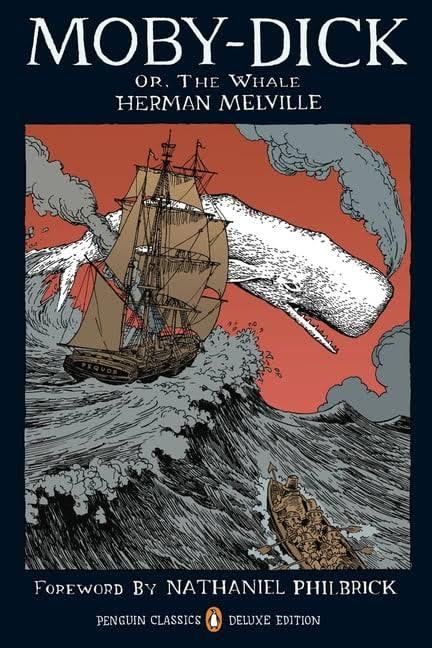
"Moby-Dick; or, The Whale is an 1851 novel by American writer Herman Melville. The book is the sailor Ishmael's narrative of the maniacal quest of Ahab, captain of the whaling ship Pequod, for vengeance against Moby Dick, the giant white sperm whale that bit off his leg on the ship's previous voyage."
17 notes
·
View notes
Text
The Inspiring Upbringing of Ruth Bader Ginsburg
by Sofia Bocchino
Most Americans know the name Ruth Bader Ginsburg, Former Associate Justice of the Supreme Court and feminist icon, but not many know how she became the influential judicial figure she will always be remembered as. Ginsburg served as an Associate Justice of the Supreme Court of the United States from 1993 to 2020, and was the second woman to serve as a Supreme Court justice in U.S. history. Growing up in Brooklyn during the 1930s and 40s, she experienced severe adversity from a young age. Her older sister died from meningitis at the age of six, and her mother died from cancer just days before her high school graduation, which she was unable to attend. Ginsburg also endured WWII in her childhood, which was an especially stressful time for her family because they were Jewish. Despite this adversity, Ginsburg excelled in school, and went on to study at Cornell University on a full scholarship. During her time there, she would meet many figures who influenced her future career, including her future husband, Martin Ginsburg, a nationally prominent tax attorney, Vladimir Nabokov, professor of literature and renowned Russian author who influenced her writing, and Robert Cushman, a constitutional lawyer who inspired her to practice law.
After graduating from Cornell, marrying Martin, having a daughter and spending two years in Oklahoma where her husband was stationed in the army, Ginsburg moved back to Massachusetts and began her legal studies at Harvard Law School. Ginsburg also became the first woman to ever serve on the editorial staff of the Harvard Law Review. However, in the midst of her studies, she had to move with her family to New York City after her husband took a job with a law firm, finishing her studies at Columbia Law School and graduating in 1959. After graduating, she struggled to find employment as a lawyer due to her gender and the fact that she was a mother. It was very rare for a woman to succeed in a law career during this time due to sexism and wage gaps. With the help of her professor from Columbia; however, Ginsburg was able to receive a clerkship under the Southern District of New York. There, she researched Swedish Civil Procedure, and her work was published in a book entitled Civil Procedure in Sweden (1965). Her experience as a clerk landed her the opportunity to work as an assistant professor at Rutgers School of Law; however, she was asked to accept a lower salary because of her husband’s well-paying job. In 1965, she gave birth to her second child. She was still working as an assistant professor and concealed her pregnancy for fear that her contract would not be renewed.
In 1970, after receiving tenure the year prior, Ginsburg became professionally involved in gender equality after being asked to moderate a student panel in “women’s liberation.” After only a year, Ginsburg published two law review articles, led a seminar in gender discrimination, and partnered with the American Civil Liberties Union (ACLU) to draft briefs in two federal cases. Throughout the 1970s, Ginsburg was a pioneer in the field of gender equality, drafting dozens of law review articles, contributing to Supreme Court briefs on gender discrimination, and co-authoring a law-school casebook on the matter. Due to her revolutionary research and career at Rutgers, Ginsburg became founding counsel of the ACLU’s Women’s Rights Project in 1972 and was hired by Columbia Law School, where she became the first tenured female faculty member. Throughout the 70s, Ginsburg argued before the Supreme Court six separate times and won five of the cases.
In 1980, President Jimmy Carter appointed Ruth Bader Ginsburg to the U.S. Court of Appeals for the District of Columbia Circuit in Washington, D.C. Ginsburg was a very liberal judge, and became heavily involved in protecting women’s reproductive rights, specifically the right to have an abortion. In 1993 she delivered the Madison Lecture at New York University Law School, providing a critique of the reasoning behind Roe v. Wade. Ginsburg argued that the court should have issued a more limited decision, providing room for the court to provide better details, claiming it would “reduce controversy rather than fuel it.”
In August of 1993, Ginsburg replaced Byron White on the Supreme Court after being nominated by president Bill Clinton and confirmed by the senate on a vote of 96-3. Ginsburg would continue to lead a fulfilling legacy for 27 years, some notable acts include requiring state funded schools to admit women (United States v. Virginia), creating strides towards equal pay in her dissent from the Supreme Court’s decision on the pay discrimination case (Ledbetter v. Goodyear Tire & Rubber Co.), protection of pregnant women in the workplace, a key vote in queer people’s right to same-sex marriage (Obergefell v. Hodges), and a pioneer in the protection of Roe v. Wade. Even after her death, Ruth Bader Ginsburg continues to pave the way for gender equality from her past work both inside and outside of the Supreme Court.
While women’s rights have been challenged in America, with the overturn of Roe v. Wade and the new President-elect’s decision to leave all aspects of reproductive rights up to each state, Ginsburg’s influence has been challenged. In spite of this injustice, feminists and pro-choice activists and politicians everywhere continue to advocate for reproductive rights. Now more than ever, it is crucial that politicians and activists across the country continue to advocate for reproductive rights and gender equality, as we are now entering a presidential term where those rights may be further threatened. This issue can be fought for through voting, educating yourself and others, and supporting political candidates and federal justices who will advocate for and work to re-establish reproductive rights and gender equality in law and government. Ruth Bader Ginsburg spent her whole life fighting for all encompassing women’s rights and gender equality, and as citizens who have been impacted by her work, it is expected that we carry on her legacy, especially in times of national adversity. Ruth Bader Ginsburg will be remembered in history as the first woman to make major breakthroughs in laws pertaining to women’s rights and gender equality as a tenured professor at Ivy League universities, all while raising two children. It was for those reasons and so much more that NYU law students and young people across the nation granted her the title of the “Notorious RBG.”
5 notes
·
View notes
Text
Considering a MFA program? Read this first!
I'm all set to graduate from what I believe to be a stellar MFA program on January 17th. Could there really be something I didn't learn? Would prestigious, world-renown faculty really leave something out?
Recently, I came across an article from Writer’s Digest titled “What They Don’t Teach You in MFA Programs: 5 Rules for Writing Stories That Work” by Chris Mooney, a “Bestselling author and creative writing instructor.” I was obviously intrigued because I’m all set to graduate from what I believe to be a stellar MFA program on January 17th. Could there really be something I didn’t learn? Would…

View On WordPress
#Author#Blogger#Chris Mooney#Creative Writing#Donal Ryan#Gen Z Publishing#Her Beautiful Monster#Joseph O&039;Connor#Kit de Waal#MA Program#Mandi Bean#Martin Sisters Publishing#MFA Program#Moody Blue#Sarah Moore Fitzgerald#University of Limerick#Writer#Writer&039;s Digest#Writing#Writing Life
5 notes
·
View notes
Note
Fic authors self rec! When you get this, reply with your favorite five fics that you've written, then pass on to at least five other writers. Spread the self-love!
Thank you for thinking of me!
For no reason at all, I tried to pick fics from across different years and fandoms. Let's do this in reverse chronological order, with the most recently published fic first.
来日方长 | the days ahead are long (Mysterious Lotus Casebook) is about Fang Duobing and Li Lianhua fixing up Lotus Tower together and beginning to heal. It's soft and sad and hopeful, and means a lot to me personally in terms of my mental health journey.
我的脚步脊梁都挺在这里 (Daomu Biji) has Liu Sang visiting the Iron Triangle in Rain Village and meeting four adorable chicks, one of whom is an impostor, gasp! I've been told this fic is like a vacation, and so chill it makes your heartbeat slow down.
flew like a moth to you (Guardian) is classic hurt/comfort featuring Zhao Yunlan ineptly but tenderly taking care of Shen Wei after his imprisonment in Dixing. I still like the imagery in the closing lines, and the touches of humour that balance out the angst.
I Was Found (The Magnus Archives) is my post-canon fic about Jon and Martin adopting a calico cat who is blind in one eye. Bizarrely, a year after I published this fic, my sister adopted a calico cat who is blind in one eye. Also, in retrospect, I realise that this fic establishes a niche I now keep going back to: post-canon + established relationship + healing vibes + cute animals
like a clockmaker fixes time (The Watchmaker of Filigree Street novels) fills in the two-year time skip near the end of The Lost Future of Pepperharrow, with Mori working through his guilt and looking after Thaniel. Mori's clairvoyance and Thaniel's synesthesia add a fun twist to the writing, and a couple of commenters said they felt like they were still reading the actual novel.
Tagging @tinbramble, @missfangirll, @thelaithlyworm, @the-gail, @chancellorxofxtrash and @justawanderingbabbit
9 notes
·
View notes
Text

So recently I've been seeing this bit of information around that "Lewis Carroll was a mathematician and he was inspired to write Alice in Wonderland because he was really frustrated by the contemporary math of his time." Specifically people kept bringing up imaginary numbers.
And that struck me as weird, because I have read a lot of writings on Alice, and I had never come across this before. I have the mega-version of the Annotated Alice, and multiple copies of Alice with introductions from pretty well-known Carrollian scholars. They all mentioned that Carroll's real identity was the mediocre mathematician Charles Lutwidge Dodgson, but never really tied that with Alice. Even The Annotated Alice, which was edited by the math guy Martin Gardner, only has math related footnotes when math (usually arithmetic) is specifically brought up by the text (such as when Alice is struggling to remember her times-tables). I should probably warn you now, there will be math in this post.
So... where does this claim come from?
I asked people for sources, and I got one response that was actually useful. They admitted they didn't have an academic source, but told me to try googling "Alice in wonderland math". It was the best lead I had (one person told me verbatim "Google is free". Classy), so I put it into Google and came up with a decent amount of results. The first article I found linked to another article from 2009 by a doctoral candidate at Oxford called Melanie Bayley. Unfortunately, the article is only available if you make an account with New Scientist, which I was not keen to do. I moved on, continued reading through poorly written articles and 10 year-old blogs, looking through their sources to see where they were getting their information... and every single article and blog post linked back to Bayley's article from 2009, or an op-ed she wrote for NY Times (also blocked behind a give-your-name-to-the-fae type deal). Fortunately, one of my family members actually has an NY Times account already, so I just asked if I could use their account to access this article.
Eureka. After reading through so many misinformed and poorly explained sources (one of which just copy-pasted Bayley's article into their blog), reading Bayley's actual article was like a miracle. It was so well-written, well-researched, and actually solidly convincing. I was nearly crying at just how beautiful the thing everyone else was ripping off really was. This encouraged me to make an account to read her New Scientist article.
Bayley references back to a paper published in 1984 by Helena Pycior, At the Intersection of Mathematics and Humor. Pycior is a Professor at University of Wisconsin Milwaukee, an MA in math, and a historian. Her paper is rigorously researched and does a fabulous job of explaining mathematical advancements (especially symbolical algebra) in the late-18th to mid-19th centuries, Lewis Carroll's own education in mathematics, and his more serious writings on math as Charles Dodgson. Pycior also highlights a line in the chapter Alice's Evidence, when Alice remarks, "I don't believe there's an atom of meaning in it, which is eerily similar to a line in Augustus De Morgan's Trigonometry and Double Algebra ("With one exception, no word nor sign of arithmetic or algebra has one atom of meaning throughout this chapter,"), a math textbook Carroll definitely read. Pycior's paper is very technical, however, and might not be for everyone. But it is a great foundation for Bayley to base her claims.
While I would highly recommend reading Bayley's articles, I understand not everyone will be interested, so I will summarize:
Bayley's analysis mainly focuses on sections added by Lewis Carroll after 1864. Carroll's original manuscript, written for Alice Liddell and her sisters, is missing several scenes from the final published version, and there are some scenes in the manuscript that were extended in the final version. The scenes Bayley dissects are Advice from a Caterpillar, Alice's first meeting with the Duchess, Alice's conversation with the Cheshire Cat, and A Mad Tea Party.
Bayley first covers the chapter Advice From a Caterpillar. She connects it to De Morgan's Trigonometry and Double Algebra. Helena Pycior points out that Carroll was "clearly inspir[ed]" by De Morgan, and references De Morgan in a few of his academic works published under his real name. Bayley draws attention to De Morgan's use of the Arabic phrase: "al jebr e al mokabala" —the original Arabic name for algebra. Bayley explains that it means "restoration and reduction". I actually don't think I can put it much better than she did, so I will use an excerpt from her article:
"Restoration was what brought Alice to the mushroom: she was looking for something to eat or drink to “grow to my right size again”, and reduction was what actually happened when she ate some: she shrank so rapidly that her chin hit her foot."
A little later, Bayley adds:
"De Morgan... proposed... that symbolic algebra should be considered as a system of grammar. “Reduce” algebra from a universal arithmetic to a series of logical but purely symbolic operations, he said, and you will eventually be able to “restore” a more profound meaning to the system – though at this point he was unable to say exactly how."
Part of the Caterpillar's "advice" to Alice is "Keep your temper", after Alice complains that she keeps changing in size. Alice assumes he means not to get angry but, as Bayley explains "To intellectuals at the time, though, the word “temper” also retained its original sense of “the proportion in which qualities are mingled”" ie. tempered steel, tempered glass, tempered chocolate etc. Bayley proposes that the Caterpillar is using this meaning of the word temper— meaning his remark would be advising her to keep her proportions the same, even if she can't stay the same size. That remark becomes relevant after Alice tries changing her size with the two sides of the mushroom: when she tries just the small side, her torso shrinks and brings her face so close to her feet she can scarcely open her mouth; when she tries just the large size, her neck stretches to ridiculous lengths. Only when she tries a bit of both in a balance— tempering them— is she able to change size while keeping her proportions.
Alice next encounters the Duchess in her kitchen, and the Duchess' notably ugly baby. As the Duchess leaves for croquet she throws (literally throws) her baby at Alice, who catches the baby and takes it outside, reasoning to herself that the violent Duchess and her Cook would likely kill the baby if Alice were to leave it there. As Alice looks down at the baby, she realizes it is turning into a pig, and she releases the baby-turned-pig into the wood.
Bayley's interpretation of this scene is as a satire of projective geometry— and specifically the "principle of continuity", laid out by French mathematician Jean-Victor Poncelet. Poncelet's description of the principle (via Bayley) is “Let a figure be conceived to undergo a certain continuous variation, and let some general property concerning it be granted as true, so long as the variation is confined within certain limits; then the same property will belong to all the successive states of the figure.” In Bayley's NY Times article, she explains it more clearly as, "[the principle of continuity] involves the idea that one shape can bend and stretch into another provided it retains the same basic properties— a circle is the same as an ellipse or parabola."
Bayley suggests that Carroll's rebuttal to this is based off Poncelet's use of the word "figure". If the figure of a triangle can change its shape while remaining a triangle, then the figure of a person (or baby, in this case) can also change its shape. As Bayley puts it "What works for a triangle should also work for a baby."
Skipping ahead to the Mad Tea Party, Bayley proposes that the characters of the March Hare, the Mad Hatter, and the Dormouse, are paralleling the concept of quaternions, proposed by William Rowan Hamilton in 1843. Hamilton's Lectures on Quaternions was the first way of representing rotations in three dimensions with algebra, and it was well-known enough at the time that it is reasonable to assume Carroll had read it, or at least seen arguments relating to it.
Here is Bayley's explanation of Hamilton's quaternions:
"Just as complex numbers work with two terms, quaternions belong to a number system based on four terms. Hamilton spent years working with three terms – one for each dimension of space – but could only make them rotate in a plane. When he added the fourth, he got the three-dimensional rotation he was looking for, but he had trouble conceptualising what this extra term meant. Like most Victorians, he assumed this term had to mean something, so in the preface to his Lectures on Quaternions of 1853 he added a footnote: “It seemed (and still seems) to me natural to connect this extra-spatial unit with the conception of time.”"
Breaking that down a little more (serious math alert): a complex number is a number with two terms, a real portion (represented by a), and an imaginary portion (represented by bi), and is written as a+bi. One of Hamilton's quaternions would be represented like this: a+bi+cj+dk. (I don't really know how they work either.)
In A Mad Tea Party, the Mad Hatter says, "It's always six o'clock now", trapping the party at perpetual teatime. The Hatter's explanation for this is that he quarreled with the personification of Time, and in retaliation, Time is keeping the clocks at six for the foreseeable future. Without Time, the Mad Hatter, the March Hare, and The Dormouse keep rotating around the table, as if in a two-dimensional plane. It is possible that this is Carroll's way of poking fun at the absurd idea that time would factor into an expression meant to determine the movement of objects in space.
And it is this final section of Bayley's article which gets misinterpreted into the claim, "Lewis Carroll was inspired to write Alice in Wonderland because he was frustrated by imaginary numbers."
I want to end with this: we have no proof Carroll intended any sort of mathematical allegory in Alice's Adventures in Wonderland. He seemingly did his best to keep his life as a mathematician and his life as a popular children's author separate from one another. Most of his surviving writing's on his inspirations for Alice make no mention of Math. That said, Melanie Bayley's article provides a truly fascinating interpretation of some of the most beloved episodes in Alice, and I wouldn't begrudge anyone who wants to believe it.
If you're interested in reading more, this is a free PDF of Melanie Bayley's NY Times op-ed. The first page is an email someone sent to friends that contained the article, but the full article is underneath.
Also, this article by Art Publika has a great overview of both of Melanie Bayley's articles, plus some extra background on Carroll, and so many pictures.
#alice's adventures in wonderland#alice in wonderland#pig and pepper#a mad tea party#alice's evidence#melanie bayley#long post#very long post#this took me forever to research and write out#so glad i'm finally finished#math
10 notes
·
View notes
Photo

A photograph fulfils my deep need to stop things disappearing. In photography I have tried to create order out of chaos, to find stability in flux and beauty in the most unlikely places.
- Dorothy Bohm
Dorothy Bohm was one of the last doyennes of post-war British photography; in a career spanning eight decades, she befriended photographers from Bill Brandt to Martin Parr, helped to develop the Photographers’ Gallery in London and created a large body of humanistic work characterised by a peripatetic lifestyle and an empathetic eye for women and children at work and play.
Her photographs - often full of joy and serenity - belied a life scarred by tragedy. As a Jewish teenager, born in Königsberg, in East Prussia, during the 1930s, she had grown up in the shadow of the Nazi threat. Eventually, for safety, she was sent to join her brother in Britain. However her family were separated by the war. She did not see her parents or younger sister again for two decades: they were taken by the Soviets and her father incarcerated in a harsh labour camp in Siberia.

At the end of the war, Dorothy opened a portrait studio in Manchester. But she soon outgrew the sterility of such photographs. By the late 1950s she rejected studio portraiture for so-called ‘street photography.’ With her husband Louis Bohm (a fellow émigré from Nazi Europe, whom she met when they were both students in Manchester) she travelled widely, and her work of this period provides fascinating insights into the changing face of post-war Europe, as well as the USA, the USSR and Israel.
It was here she found her true place in the art of photography. Her photographs captured everyday interludes often of the working classes: women at fruit and flower stalls in Switzerland and Belgium, resting shoppers in Cordoba, street market browsers on Petticoat Lane Market in London and concierges on a break in the Marais. The men in her pictures were largely benign figures: racing punters at Goodwood, poor struggling painters in Montmartre in the 1950s.
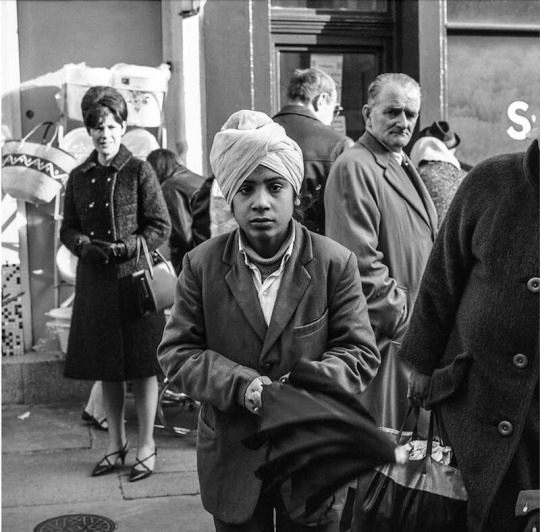
She is known for her black and white photography but she only truly turned to colour polaroid photos in the 1980s. But what remained central was the human figure in its natural setting is still the primary focus of her work and she continues to use photography in its purest, un-manipulated form, her approach had become more painterly and allusive, with an ever greater interest in spatial and other forms of ambiguity.
She had her first solo show in 1969 at the ICA, where her exhibition, “People at Peace”, was juxtaposed with “The Destruction Business”, a selection of Don McCullin’s war photography. Her first photobook, A World Observed, was published the following year.
Her photographic output decreased during the 1970s as she helped to build the reputation of the Photographers’ Gallery, which opened in 1971 in a former Lyons Tea Room in Covent Garden. As an associate director for 15 years, she worked on exhibitions of veteran snappers and emerging talents such as Sarah Moon and Colin Jones. She photographed well into her 90s, often around her neighbourhood in Hampstead, continuing to capture quiet, dignified moments. A photograph, she said, “makes transience less painful”.

In her later years, Dorothy Bohm reflected that England had been her salvation. “It’s the best country, I can tell you that, and I’ve lived in a number of them,” she noted, “Why? Because of the people.” Photography for her, as she would confess in countless interviews, was essentially a coping mechanism for loss, “I am temperamentally suited to being a photographer. You can only make a picture of something that exists, right? And for me that was quite important. I wanted to capture time. My background completely disappeared.”
RIP Dorothy Bohm (1924-2023)
#bohm#dorothy bohm#quote#photographer#art of photography#street photography#britain#femme#visual art#photography#society#culture#class#icon
79 notes
·
View notes
Text

Leon A. Huff (born April 8, 1942, in Camden, New Jersey) a session pianist became half of a seminal R&B songwriting and production team when he teamed with Kenny Gamble in 1965. He played in sessions for Phil Spector, the Ronettes, and Carole King in New York City before moving to Philadelphia. He formed the Locomotions and did sessions for Cameo and Swan. He performed on the song “The 81,”, who was at the session seeing the tune being recorded by Candy & the Kisses. He earned his first hit as a composer by writing “Mixed-Up Shook-Up Girl”. He joined the Romeos the next year, then teamed with Gamble to form Gamble Records. He wrote hits for the Ebonys, People’s Choice, Carolyn Crawford, and Bunny Sigler. He issued two singles as a solo artist on Philadelphia International, with “I Ain’t Jivin’, I’m Jammin” getting some moderate recognition.
Gamble and Huff formed Philadelphia International Records in 1971 as a rival to Motown. CBS Records backed the venture and distributed Philadelphia International’s records. Aided and abetted by in-house arrangers Thom Bell, Bobby Martin, and Norman Harris, Philadelphia International released a number of the most popular soul music hits, including “If You Don’t Know Me by Now”, “Back Stabbers”, “For the Love of Money”, and “Love Train”, as well as the Grammy-winning “Me and Mrs. Jones”. In collaboration with Bell, Gamble, and Huff formed the music publisher Mighty Three Music.
Philadelphia’s soul sound evolved from simpler arrangements into a style featuring lush strings, thumping basslines, and sliding hi-hat rhythms—elements that soon became the distinguishing characteristics of a new style of music called disco. Philadelphia International and the Philadelphia soul genre it helped define had eclipsed the Motown Sound in popularity, and they were the premiere producers of soul.
Nearly all of the Philadelphia International records featured the work of Mother Father Sister Brother. MFSB cut several successful instrumental albums and singles written and produced by the team including the #1 hit “TSOP (The Sound of Philadelphia)” known as the theme song from Soul Train. #africanhistory365 #africanexcellence
10 notes
·
View notes